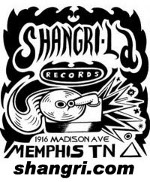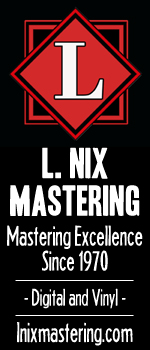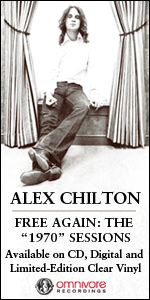Ask any of the original participants who made the record, and none of them would say they expected this album to ever see a real release, much less end up on Rolling Stone’s list of the 500 best albums of all time. At the time, it elicited comments from record industry execs that included “this music makes me uncomfortable” and “I don’t have to listen to that again do I?” Producer Jim Dickinson even hesitated to call it an album, instead referring to it as a collection of recordings that didn’t even have a final running order or tracklisting. It’s doubtful that it was even considered a Big Star project while it was being recorded since the two inch 16 track tape boxes say “Sister Lovers,” the quarter inch mixdown tape boxes say “Alex & Jody,” and the vinyl mastering cards simply list “Alex Chilton” as the artist.
Recording commenced most likely after Big Star’s spring/summer tour promoting Radio City, with the only consistent participants being Alex, Jody, & Jim Dickinson. Like Big Star’s two previous records, the basic tracks were done in 3 or 4 batches with John Fry at the recording desk. Additional engineering duties were performed by Dickinson, Chilton, and Ardent engineer and drummer Richard Rosebrough. While the sessions are reputed to have been chaotic and unorganized, the track sheets and multitrack tapes tell a different story. Jim Dickinson said two things stand out about that record. The first being that John Fry’s engineering “which makes the record timeless,” and the other is the fact that “there’s nowhere on that record where Alex is throwing it away.” This all flies in the face of the notion that the record was haphazardly created and executed. It’s likely that very few songs went past a couple of takes, if Alex’s aside at the end of the first take of “Femme Fatale” is any indication (“why should we do another one?” he replies after a musician in the room suggest that they will have what they need after a second take). Jody Stephens recalls no rehearsals prior to recording the basic tracks, quite unlike #1 Record and Radio City. Alex did cut demos for 9 of the 19 songs recorded, all but one consisting of Alex & his guitar. While the lack of preproduction contributed to the loose feel of the songs, there’s no doubt that Alex was chasing sounds he heard in his head, and knew when he had captured them on tape.
While Jody has said the album could be a Chilton solo album, his contributions (and John Fry’s) are precisely what makes it a Big Star album. It was Jody who brought in the string players, with arrangements by Carl Marsh. Alex then decided the strings should be overdubbed onto many of the other songs, even rewriting the lyric for “Lovely Day” and renaming it after violinist Noel Gilbert. Jody also sings more harmony vocal on this record than ever before, as well as contributing his first recorded songwriting effort “For You”. He also experimented more with drum overdubs than on previous albums, even overdubbing an entire second drum kit onto the end of “Jesus Christ.” Even with Dickinson playing drums on “Kanga Roo” & “O Dana,” and Tarp Tarrant (Jerry Lee Lewis’ drummer) playing on “Whole Lotta Shakin,” Jody’s role in shaping the album remains undiminished. John Fry’s characteristically pristine engineering shines on the album as well. A quick comparison of the multitrack versus mix of a song like “Big Black Car” (aka “Limo Lullaby”) reveals his adept use of reverb to create a big part of the album’s atmosphere. As Jim Dickinson put it once, during the mixing process “I (Dickinson) sat there and watched him (Fry) cook.”
Third differs from its predecessors in tone and presentation. A look at the tracksheets reveals quite a varied list of instrumentation. In addition to the standard drums, bass, and guitar setup that was the foundation of #1 Record & Radio City, the album boasts upright (acoustic) double bass, a myriad of keyboards (piano, synthesizer, clavinet, Mellotron, organ), strings, steel drum, bassoon, recorder, accordion, saxophone, and tympani. This eclecticism is also illustrated by the long list of musicians that contributed to the recordings. Jim Dickinson contributed vocals, drums and keyboards to numerous tracks in addition to his role as producer. Richard Rosebrough played tympani, female background singers add unconventional support, and Steve Cropper was plucked from the halls of Ardent to add guitar to “Femme Fatale.” Local legend and long time Dickinson collaborator Lee Baker contributed distinctive guitar to a few tracks. Lesa Aldridge contributed background vocals to “Femme Fatale” (and sang the lead on the original mixes of “Till The End Of The Day”), co-wrote “Downs,” and most importantly served as Alex’s muse for much of the record.
After months of recording and mixing with 19 tracks in the can, a halt was called to the proceedings and the decision was made to assemble a tracklist and press 300 copies (to the best of Fry’s recollection) to shop the record to label executives. Unfortunately three years passed before it saw a release, but over the following two decades a cult of fans spread the album via cassette and word of mouth until Rykodisc approached Ardent about releasing Third along with a live broadcast from 1974 and a collection of Chris Bell’s solo recordings. As Dickinson stated numerous times, the overriding theme of the album (if you want to choose one) is decomposition. Stax (Ardent Records’ parent company) was going under, the band was falling apart, and by most accounts Chilton & Aldridge’s relationship was tempestuous. Undoubtedly, midtown Memphis is the geographic center of the album. That’s where the bars were (Trader Dick’s was two doors down from Ardent), where Alex lived, where Ardent still is, and in the end that’s what the album still feels like 36 years later (to this writer anyway). It’s an amazing snapshot of the artists and the times and circumstances in which the recordings were made. It’s a great testament to Third that an album that almost nobody was Interested in at the time of it’s pressing is now loved and sought out by an ever growing legion of fans. I guess that’s called “ahead of it’s time.”
Following the completion of the Big Star 4CD box set Keep An Eye On The Sky and 2CD reissue of Chris Bell’s I Am The Cosmos, Cheryl Palweski and Greg Allen approached Ardent about a special edition repressing of the original white label vinyl. With demand for high quality vinyl undergoing a massive resurgence, as well as Chris Stamey and friends’ live performances of Third receiving high praise, the time was right for a deluxe pressing. What little documentation Ardent could find was compiled and scanned for the packaging, and the vinyl master was cut on the same lathe through the same EQ’s and limiters as the 1975 pressing. The result is impressive even to those who worked on the original. The original tracksheets, lead sheets, and mastering cards are faithfully recreated, the only concession being that they are two sided while the originals were one sided. When the test pressings arrived at Ardent last week everyone gathered around the box of promos in anticipation, and all I could think was how incredible it was that an album that almost no one was interested in thirty-six years ago was now being greeted with smiles and excitement.
– Ardent Studios Engineer Adam Hill
Got a question for Ardent Studios? Ask it here.
See Also: Big Star’s Third Remastered Pressing Includes 5 Golden Tickets!











